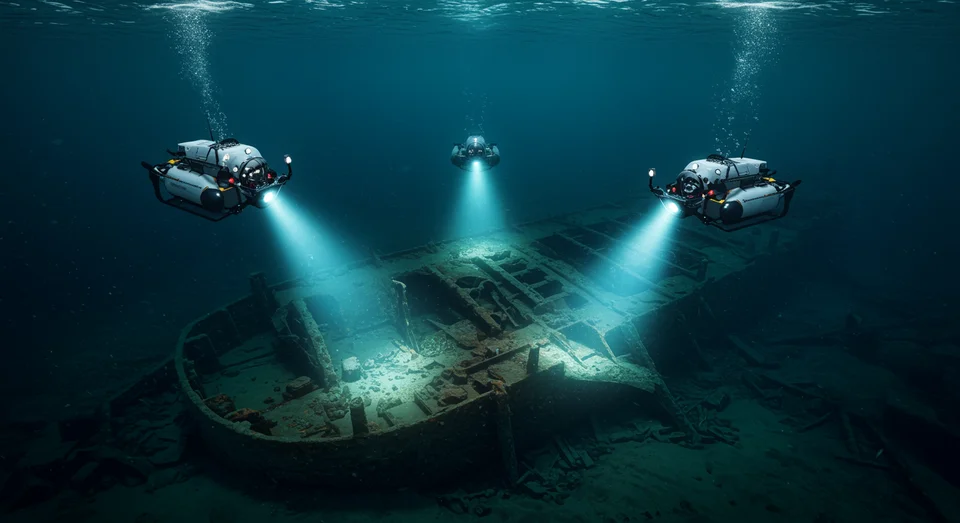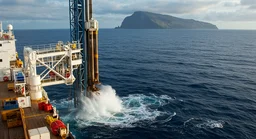Titanics Digital Twin Unveiled by Magellan Researchers, Reshaping Maritime History
186 views
A new documentary, "Titanic: The Digital Resurrection," has unveiled groundbreaking revelations about the infamous maritime tragedy, offering a vivid reconstruction of the RMS Titanic's final hours. Using cutting-edge deep-sea mapping technology, researchers have created an astonishingly detailed "digital twin" of the wreck, shedding light on the ship's structural damage and the heroic efforts of its crew during those harrowing moments. Survivor accounts, long debated and sometimes dismissed, now find affirmation in the meticulous digital analysis, painting a clearer picture of the disaster that claimed over 1,500 lives.

Titanic’s Digital Revival: A Window Into History’s Darkest Night
The RMS Titanic, a symbol of human ambition and hubris, has languished on the ocean floor for over a century, its story preserved in fragments of memory and steel. But in 2022, Magellan researchers embarked on an ambitious quest to capture the wreck in unprecedented detail. Armed with advanced scanning technology, they compiled 715,000 photographs and hours of video footage, creating a digital replica so precise it accounts for every rivet and rusted seam. This effort, now immortalized in the documentary, serves as both a scientific triumph and a poignant tribute to the ship’s enduring legacy.
Among the most striking discoveries is evidence supporting survivor testimonies that ice entered some cabins during the collision with the iceberg. For decades, such accounts were dismissed as exaggerations or misremembered trauma, yet the digital mapping reveals damage consistent with these claims. Researchers identified several printer-paper-sized holes along the hull, likely caused by the iceberg’s jagged edges. These breaches, though seemingly minor, proved catastrophic as water poured into the ship’s compartments with relentless force, overwhelming its much-touted safety systems.
Equally compelling is the newfound understanding of the engineers’ extraordinary sacrifice. The analysis confirms that Titanic’s boilers remained operational until the very end, ensuring the ship’s electrical systems could power distress signals and lifeboat operations. This act of defiance against the encroaching waters saved hundreds of lives, as passengers were able to board lifeboats and signal nearby vessels for help. None of the engineers survived, their heroism etched into the annals of history yet seldom given its due. The digital twin now stands as a testament to their courage, illuminating their role in mitigating an already unimaginable tragedy.
As the physical wreck continues to deteriorate under the relentless pressures of the deep, the digital twin offers an enduring archive of the Titanic’s story. Experts believe this virtual model will serve as a cornerstone for future research, allowing historians, engineers, and even artists to explore the ship in ways previously unimaginable. Beyond its scientific value, the digital twin preserves the emotional gravity of the disaster, ensuring that the Titanic’s lessons—about human ambition, fragility, and resilience—remain accessible to generations yet unborn.
The documentary’s revelations also invite reflection on the evolving relationship between technology and history. In an era where digital tools increasingly mediate our understanding of the past, projects like this challenge traditional notions of preservation and memory. Can a digital replica ever truly capture the soul of a lost artifact? Or does it merely offer a simulacrum, devoid of the tactile weight of history? These questions linger as the Titanic’s digital resurrection unfolds, offering both answers and provocations.
More than a century after its maiden voyage ended in tragedy, the Titanic continues to captivate the world’s imagination. Its story, replete with grandeur and sorrow, serves as a mirror to humanity’s eternal dance with ambition and fate. The digital twin, with its rivet-by-rivet accuracy, doesn’t just document the ship’s demise—it breathes new life into its legacy, ensuring that the lessons of that cold April night endure. In the depths of the Atlantic, the Titanic rests, but through technology, its story rises anew, a haunting and humbling reminder of the fragility of human dreams.




























